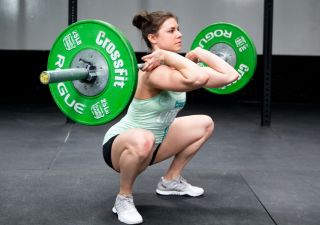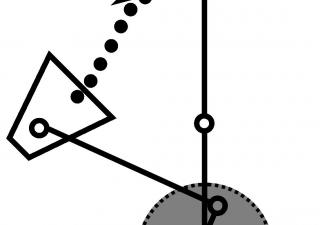by Dan Williams | Jan 30, 2017 | Biomechanics, Blogs, CrossFit, Exercise, Improving Athletic Performance
The development of new physical skills brings with it a raft of changes in the skill itself, as well as in the individual performing that skill. Regardless of the complexity of the skill, from a toddler walking to an elite athlete performing complex gymnastics or...
by Dan Williams | Aug 9, 2016 | Biomechanics, Blogs, CrossFit, Exercise, Exercise Philosophies, Improving Athletic Performance, Programming
We preach inclusive fitness. The scaleability of movement for all levels of exerciser. But sometimes I think the method of scaling is missing the mark. We scale for lower levels of current ability, but the real WHY of scaling comes down to two reasons: ...
by Dan Williams | May 1, 2016 | Biomechanics, Blogs, CrossFit, Exercise, Exercise Philosophies, Health, Improving Athletic Performance, Musculo-skeletal Rehabilitation
You should see every repetition you do as an opportunity for improvement. Every. Single. Rep. The end goal is perfection. But it’s a goal that can never be achieved, because absolute perfection of movement is unrealistic. What is realistic is improvement....
by Dan Williams | Mar 20, 2016 | Biomechanics, Blogs, CrossFit, Exercise, Health, Improving Athletic Performance, Musculo-skeletal Rehabilitation
Movement provides a window into the body. Assessing movement is like detective work. Observing movement and assessing faults gives us clues to identify underlying dysfunction. There are few better diagnostic tools than the squat. The number of directions in which...
by Dan Williams | Jan 19, 2016 | Biomechanics, Blogs, CrossFit, Exercise, Improving Athletic Performance, Musculo-skeletal Rehabilitation
As coaches and judges, we’re really good at policing the range of movements. We define a movement by its start and end point. Hip crease below the knee, chin over bar, arms locked overhead. These attributes are important, they allow us to define movement. But...

by Dan Williams | Jun 30, 2014 | Biomechanics, Blogs, Flexibility, Health, Improving Athletic Performance, Musculo-skeletal Rehabilitation
We’re excited to announce that Physiotherapist Penny Stern is joining Range of Motion’s Clinic team. Penny is a long term client of ROM, and is looking forward to increasing this involvement. Aside from her expertise as a Physiotherapist, Penny has an...

by Dan Williams | Jul 15, 2013 | Biomechanics, Blogs, CrossFit, Exercise, Improving Athletic Performance, Musculo-skeletal Rehabilitation
Correct bracing for movement is imperative for three mutually inclusive variables; the maintenance of neutral spine, injury prevention and the maximisation of force production. The purpose of this article is two-fold, to teach strategies for bracing, and to explain...
by Dan Williams | Jul 14, 2013 | Biomechanics, Blogs, Exercise, Improving Athletic Performance, Musculo-skeletal Rehabilitation
Niall Ryan discusses research he condiucted into muscle activation patterns in full versus partial depth squats. A common misconception in training is that all healthy individuals should squat above parallel, and many believe that squatting marginally above parallel...
by Dan Williams | Apr 2, 2011 | Biomechanics, Blogs, Chronic Conditions, Exercise, Health, Improving Athletic Performance, Musculo-skeletal Rehabilitation
In part one of this blog series, I discussed the prevalence of muscular injuries in general. In this, we discuss the specific need for further examination of the hamstrings – and why this muscle group is so predisposed to injury. Askling et al (2002) stated that...

by Dan Williams | Sep 14, 2010 | Biomechanics, Blogs, Exercise, Exercise Philosophies, Improving Athletic Performance, Musculo-skeletal Rehabilitation
Maintaining a neutral spine during complex movements is the single most important technique based skill there is. First – some definitions: Neutral spine is the position where the spine and pelvis are least likely to suffer damage, deformity and degeneration. Neutral...



